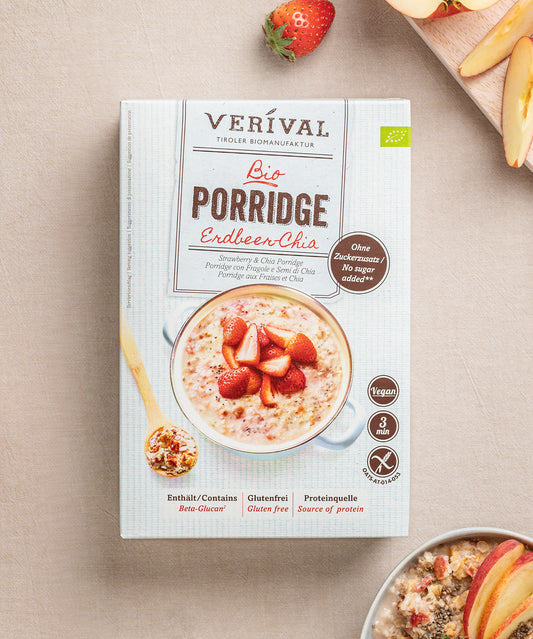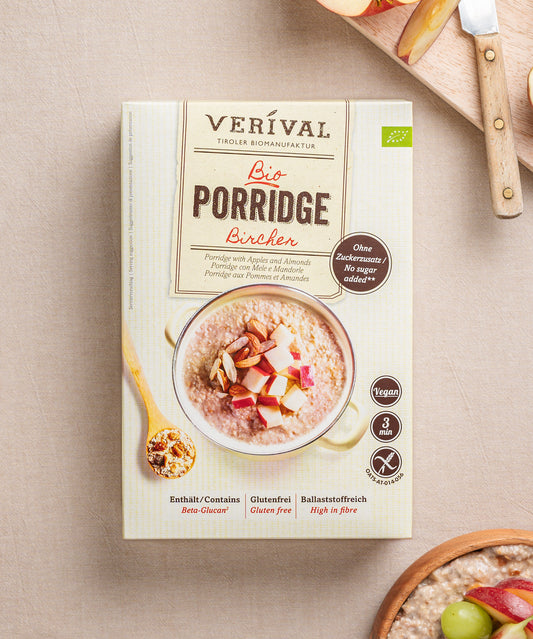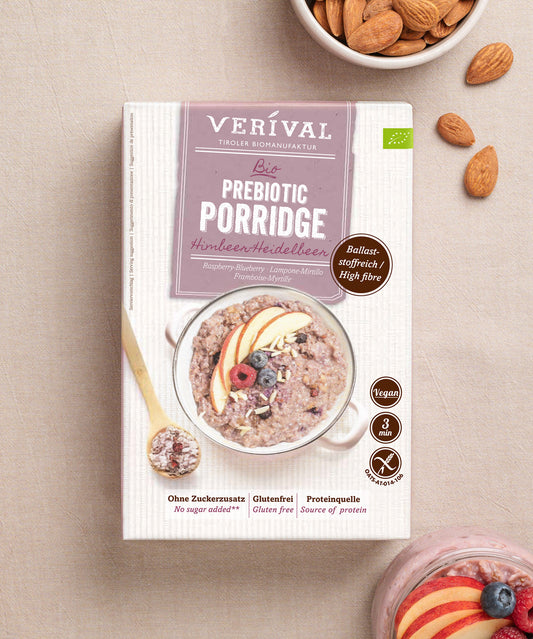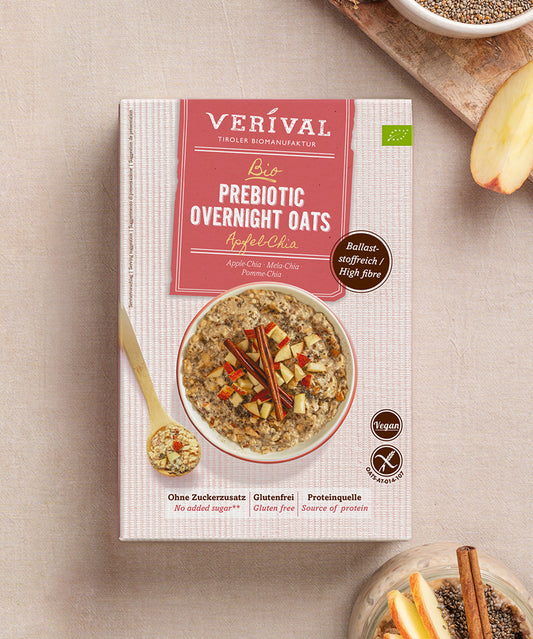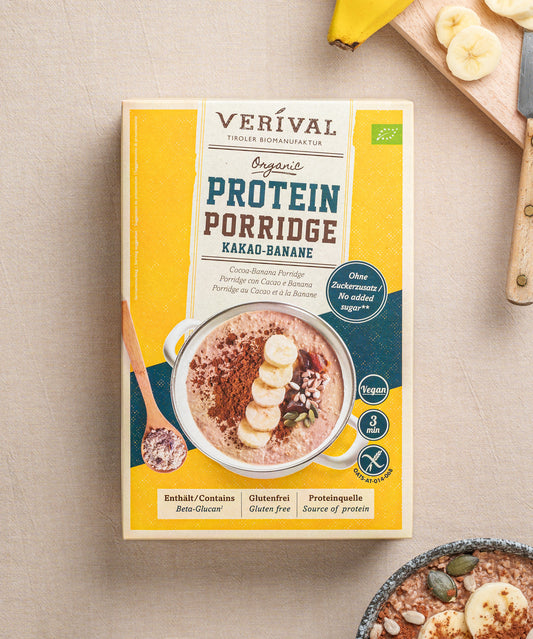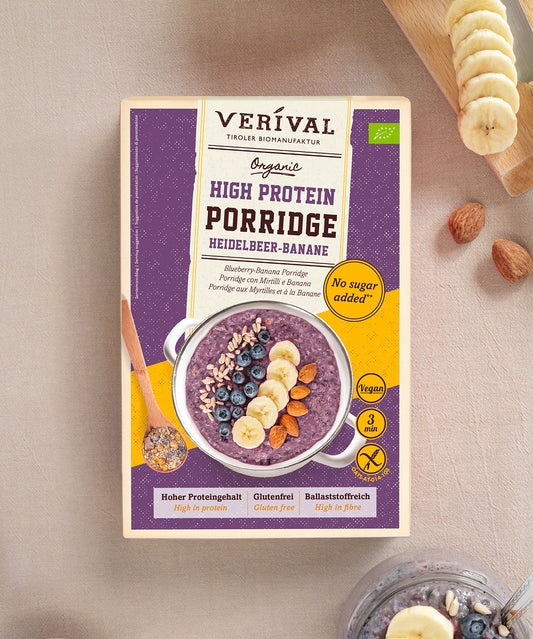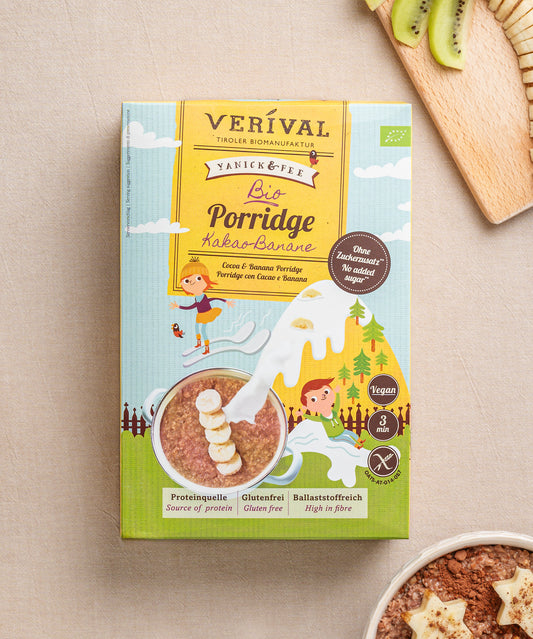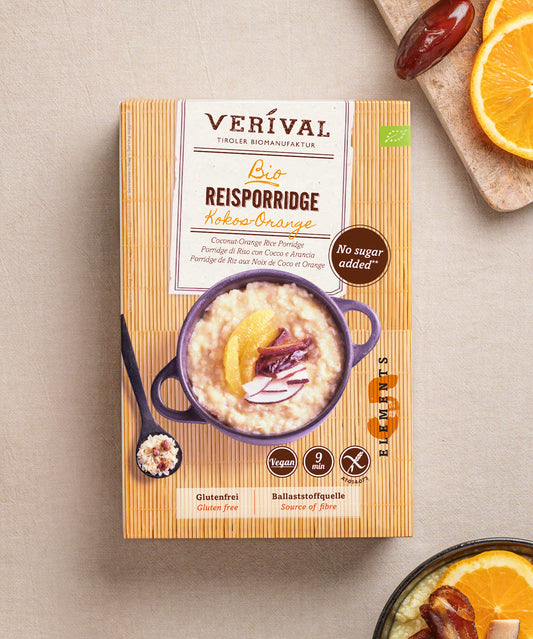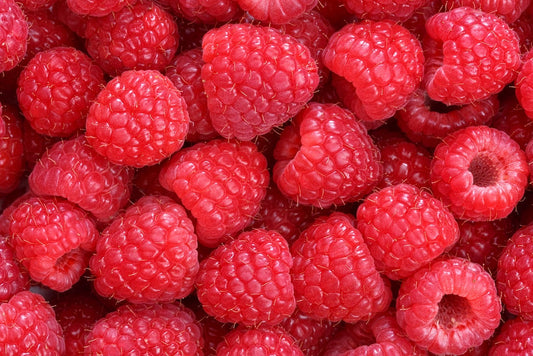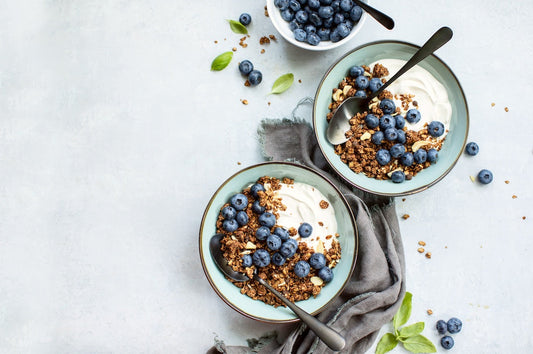Healthy eating is trendy, and that's a good thing. It strengthens the body and immune system and boosts performance. Thanks to a continuously increasing selection of healthy foods, it is becoming easier and easier to eat a healthy and balanced diet these days.
It's not just about eating as sugar-free a diet as possible, because a certain amount of (natural) sugar won't do any harm. The emphasis is much more on ‘balanced nutrition’.
As long as you eat a varied, mixed diet with a predominance of plant-based foods, you should be fine as long as you include some sugar and fat.
It is not only when building muscle that nutrition plays a decisive role alongside targeted training.
The right diet can also achieve a great deal during pregnancy or for various illnesses such as rheumatism, gout, arthritis and diabetes.
But what exactly does a healthy diet look like?
Healthy breakfast from Verival
A closer look at healthy eating
A balanced and healthy diet includes such basic things as adequate fluid intake and regular food intake. Portion size and a healthy – i.e. not excessive – calorie intake are also important if you want to eat consciously. The German Nutrition Society (DGE) has compiled a list of recommendations:
- Enjoy a wide variety of foods and choose mainly plant-based foods.
- Eat five portions of fruit and vegetables a day – this includes legumes.
- Choose wholegrain cereals.
- Supplement your diet with animal-based foods.
- Use vegetable oils and avoid hidden oils in processed foods.
- Cut down on or avoid sugar and salt.
- Drink at least 1.5 litres of liquid – preferably water – a day
- When cooking, make sure you use gentle preparation methods
- Eat mindfully and enjoy food
- Watch your weight (BMI ) and keep moving
A healthy lifestyle also includes sufficient exercise. Sport not only helps to build muscle but is also good for the body in general. Speaking of muscle building: the right nutrition also plays an important role here. The DGE recommends that at least half of your energy requirements should be covered by carbohydrates.
Along with proteins and fats, they are the most important energy suppliers for our body. And the more you move and the more inclined you are to physical activity, the more carbohydrates you should generally consume.
What to look out for with carbohydrates
However, it is important to consider the type of carbohydrate, because there are two categories. Good or wholesome carbohydrates include all more or less unprocessed carbohydrate-rich foods.
These still have their original fibre content. At the same time, they have a low glycaemic index.
This means that they have less of an effect on blood sugar levels than bad carbohydrates. Bad carbohydrates, on the other hand, are mostly found in (industrially) processed foods. It is not for nothing that they are also known as refined or isolated carbohydrates.
During processing, the fibre content is minimised as much as possible in order to increase the shelf life of the food. Although this makes it easier to use in the food industry, it does not exactly make the food healthier.
Incidentally, muesli is particularly suitable for an energetic start to the day: in addition to carbohydrates, it provides sufficient vitamins, minerals and fibre.
Porridge is also a good source of energy. On the other hand, it is recommended to eat protein in the evening. This is based on the idea that our organism is active during the day and regenerates at night when we sleep. This suggests eating carbohydrates in the morning to provide the body with enough energy.
Different diets and nutrition plans
Anyone who wants to change their diet or is looking into healthy foods is repeatedly confronted with more or less promising diets and different nutritional concepts.
Almost all of them claim to be the healthiest way to eat healthily, lose weight or build muscle. We would like to take a closer look at some of them here, because there is no universal formula for healthy eating:
Alkaline nutrition
As the name suggests, alkaline nutrition focuses on base-forming foods. In addition to fruit and vegetables, these include herbs, some types of nuts, sprouts and seeds.
The body needs sufficient nutrients and minerals for an optimal metabolism. Ready-made products, which are available on every supermarket shelf for quick meals, contain a lot of additives, as does fast food.
In addition, the high protein and fat content of our modern diet causes a huge increase in acid levels in our body over the long term. By contrast, the foods listed above, with their high density of fibre, nutrients and minerals, ensure a well-functioning organism.
Incidentally, oats are also an alkaline food thanks to their good mineral profile. With numerous vitamins, unsaturated fatty acids, minerals and antioxidants, oat flakes are real nutritional powerhouses. To conjure up a valuable, healthy breakfast made from oats, you can process the flakes into overnight oats.
Gluten-free breakfast from Verival
The right nutrition during pregnancy
We all know the myth of ravenous hunger attacks and the craving for such exotic combinations as pickles and chocolate during pregnancy. The need for food intake can actually increase – after all, a pregnant woman eats for two. Nevertheless – and even though there are some exceptions to be aware of – nutrition before and during pregnancy is based on the generally valid recommendations for a healthy diet.
Ideally, several meals should be eaten each day to provide the pregnant woman's body with a consistent supply of energy and nutrients. The exceptions mentioned above include avoiding stimulants such as alcohol and nicotine (generally not part of a healthy diet). Raw milk products should also be avoided, along with raw fish, raw eggs and raw meat.
Energy and nutrient requirements: The energy requirements of pregnant women increase by around 350 kcal per day from the second trimester and then again from the third trimester. The need for nutrients also increases – and more than the energy requirement. A deficiency of certain nutrients, such as folic acid, can lead to complications for mother and child, such as growth retardation or premature birth.
Folic acid, iron, omega-3 fatty acids, vitamin D and calcium, but also protein and vitamin A should be on the menu of every pregnant woman in the interest of a balanced diet. And since we are already talking about pregnant women and offspring: once the little ones are born and start to grow and thrive, sooner or later they too will want to have their own way.
Choosing the right food in particular can be a tricky subject with children. Not every child likes what their parents consider to be good and healthy. That is why we at VERIVAL sought help from representatives of both ‘parties’ when creating the recipe: on the one hand, extensive scientific input from nutrition experts and, on the other hand, practical tastings with children aged 6-10.
Conclusion
The conclusion is quite clear: there is no single correct way to eat. Numerous factors come into play, such as personal preferences, allergies and intolerances. What tastes good to one person may not agree with the next. What is important – even with all the diets and nutritional concepts mentioned above – is to ensure a balanced mix and not to neglect certain nutrients.
For example, carbohydrates should not be missing from any diet, even if it is based on the ketogenic diet. Whole grain scores highly here with complex carbohydrates and a low glycaemic index. In addition to a high satiety effect, they also have a high nutrient density.
They are also rich in vitamins and minerals, trace elements and phytochemicals that promote performance. The advantages and properties of whole grain can be summarised as follows:
- Complex carbohydrates that cause blood sugar levels to rise slowly and keep you full for a long time.
- Low glycaemic index.
- Source of important dietary fibre, vitamins and minerals.
- important for concentration, alertness, performance in the morning
- ideal for replenishing empty energy stores
As long as you follow the basic principles of a healthy diet, which are sufficiently described here, the following simple principle actually applies: if it tastes good, it is good for you. And so, in the end, you yourself know best what is good for you and your body and what you would rather do without. All the nutrients in one bowl – that applies to our VERIVAL porridge. Our porridge provides your body with all the important nutrients it needs at breakfast time. You will also find lots of healthy breakfast ideas and healthy breakfast recipes.


